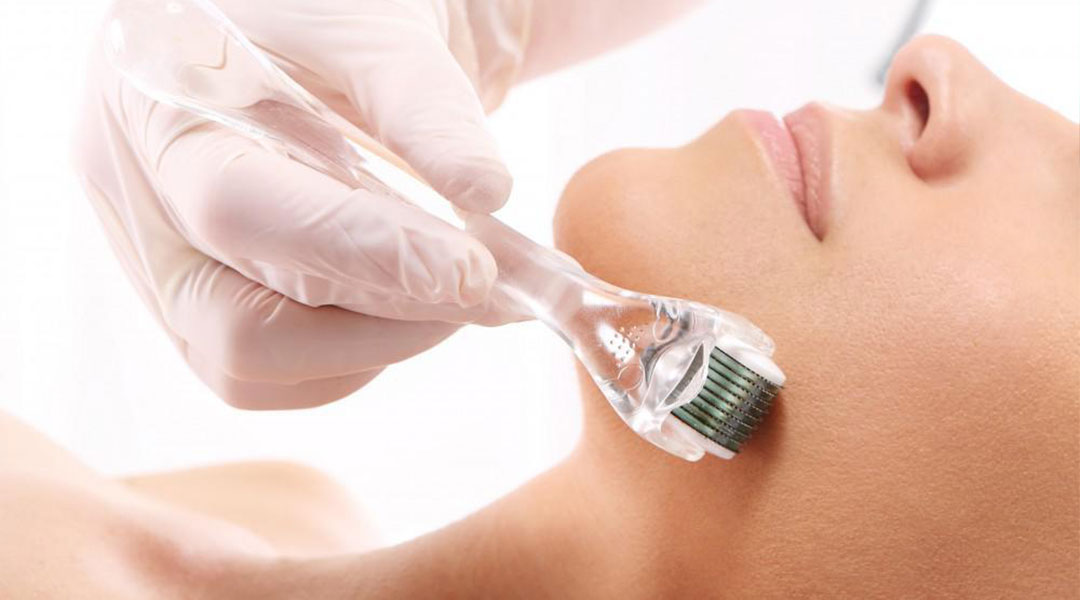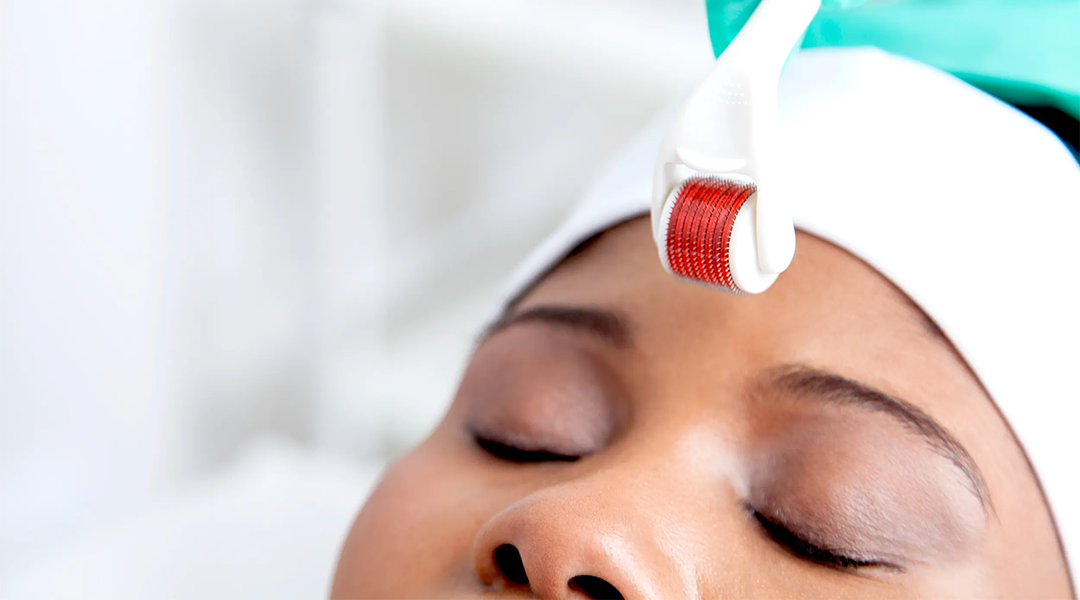Microneedling is a non-surgical and minimally invasive skin procedure that utilises a number of miniscule needles to puncture the outer layers of the skin and create a series of microscopic wounds in the skin. Now this may sound like a painful and scary treatment on the outset, but it’s actually not as bad as it seems. By creating these tiny puncture wounds, it microneedling triggers the natural healing responses within the body to heal and rejuvenate the skin. One of these responses is to trigger renewed production of collagen which, as anyone who has seen an advertisement for a beauty product on television will be able to tell you, is responsible for giving your skin a youthful appearance. In turn, this helps to reduce the visibility of fine lines and wrinkles whilst enhancing the general texture of your skin.
How should I prepare for microneedling?
First things first, if you’re using any particularly intense skin products or topical treatments (especially those containing things such as retinol) we strongly advise that you stop using them a few days before going in for your microneedling treatment. Harsh or intense skincare products can aggravate the skin and can interfere with the results of the microneedling treatment. Milder products are still okay to use, but if you can get away without using them then that is the best possible solution.
In addition to ensuring your skin is as clear as possible, you should also avoid direct exposure to sunlight (wherever possible) for at least three days before your microneedling treatment as this can, just like with harsh products, interfere with the results and success of the treatment.
On the day, you should be arriving with clean, dry skin that has avoided sunlight and is ready to go. It’s likely that your skin will have some form of numbing cream applied to it before the microneedling treatment begins to mitigate any form of pain that could happen during the treatment.

What to expect from microneedling
First things first, the big one is does it hurt? Well, after having numbing cream applied and given some time to let it soak into the skin, undergoing the microneedling process and having a selection of needles repeatedly puncturing your skin becomes a much nicer treatment to deal with. The majority of patients report very little to no pain at all during the treatment.
Whilst some areas of the face will be more sensitive than others and each patient has their own individual tolerance to pain, the overwhelming response we see towards microneedling is that it doesn’t actually hurt during or after the treatment.
Once the treatment has been performed, the numbing cream will eventually wear off and you’ll be left with very little downtime to deal with at all. Commonly seen after effects of a microneedling treatment are only little things like a bit of redness and some areas of pinpoint bleeding, but the most common is the redness. A few hours after your microneedling appointment you will be back to normal and able to carry on with your normal daily routine (although you should probably continue to avoid harsh skincare products and sunlight for a few days afterwards as well).
What are the benefits of microneedling?
The main benefits of microneedling, aside from rejuvenating your skin, are enhancing the overall texture and feel of the skin, stimulating the renewed production of collagen, reducing the appearance of scars and hyperpigmentation and reduce the appearance of fine lines and wrinkles.
Because microneedling is a collagen stimulating procedure, it can work wonders for your skin by treating issues such as acne scarring, wrinkles, lines, pores, hyperpigmentation, sagging skin and much more.

What about the side effects of microneedling?
The obvious ones that we mentioned earlier are redness of the skin and some pinpoint areas of bleeding, but there are a few others that can happen such as some degree of itchiness and the possibility of small imprint marks post-procedure that will fade over the days after the treatment.
Can I do it myself at home?
It’s possible to buy dermarollers and microneedling devices that you can use at home, but unlike the professional grade devices, these tend to be much milder and don’t puncture the skin. Whilst it is a much less painful and lower risk option if you are on the fence about a microneedling procedure, you won’t receive the same results as you would if you were to book yourself in for a session. A professionally performed microneedling procedure is designed to induce and trigger rejuvenation within the skin, whereas home quality roller devices are likely to just help you achieve brighter skin as a best case result.
Aftercare is key for your skin
The aftercare routine that you implement following your microneedling treatment is incredibly important for achieving the best possible results. Your skin will be littered with microscopic wounds that will absorb products and light much more easily than before.
We’ve already mentioned avoiding harsh skincare products, but if you’re able to, we highly recommend avoiding any skincare products (at least during the initial healing phase) to make sure your skin has the chance to react well to the treatment and heal properly. Studies have shown that after undergoing a microneedling treatment, skincare products will be able to penetrate the skin much more deeply and a lot of patients tend to see better results from their skincare routine whilst applying and use smaller amounts of product.
So after all that, you should now have a good basis to work on to make a decision on whether or not microneedling is the right treatment for you and your skin. To find out more information about this amazing treatment, take a look at our microneedling page or to book yourself in for a consultation with a member of our team, simply fill in the contact form on our site and someone will be in touch with you to answer any questions that you may have.

